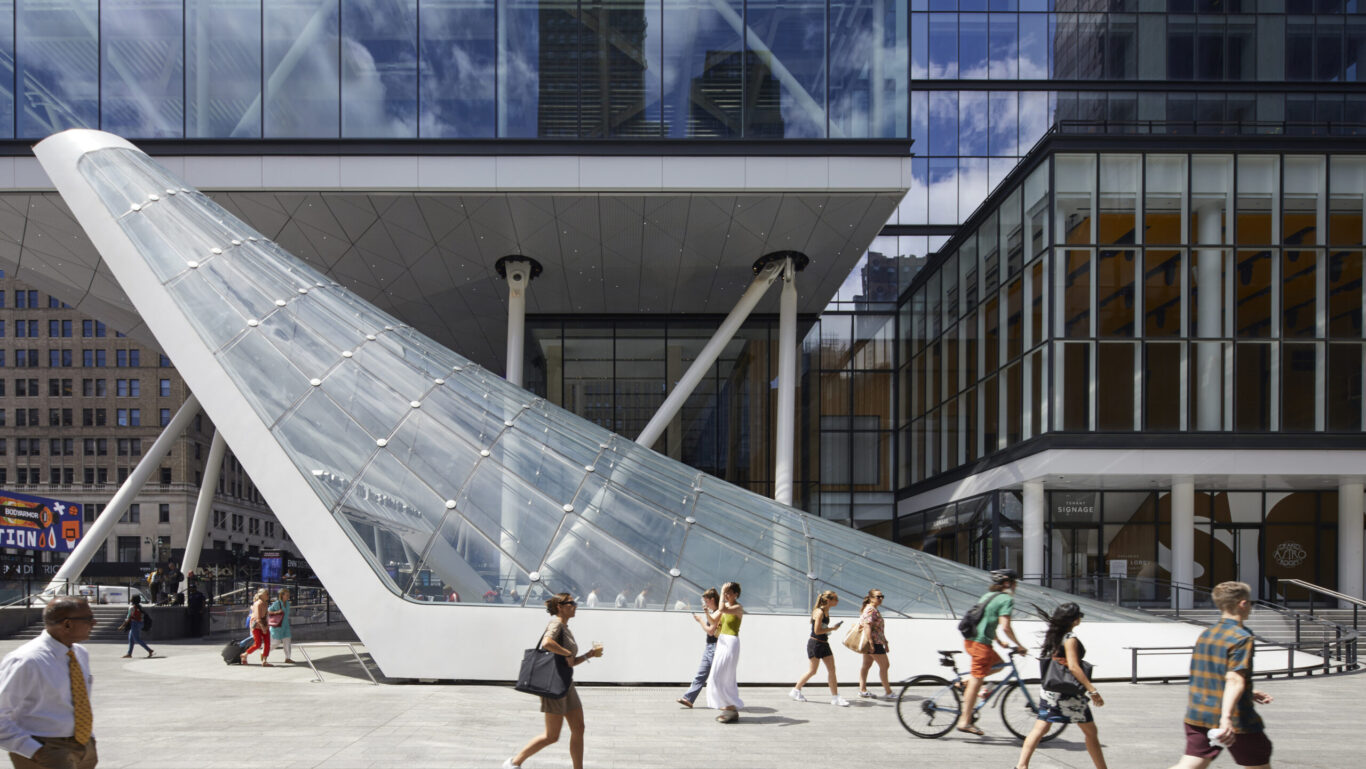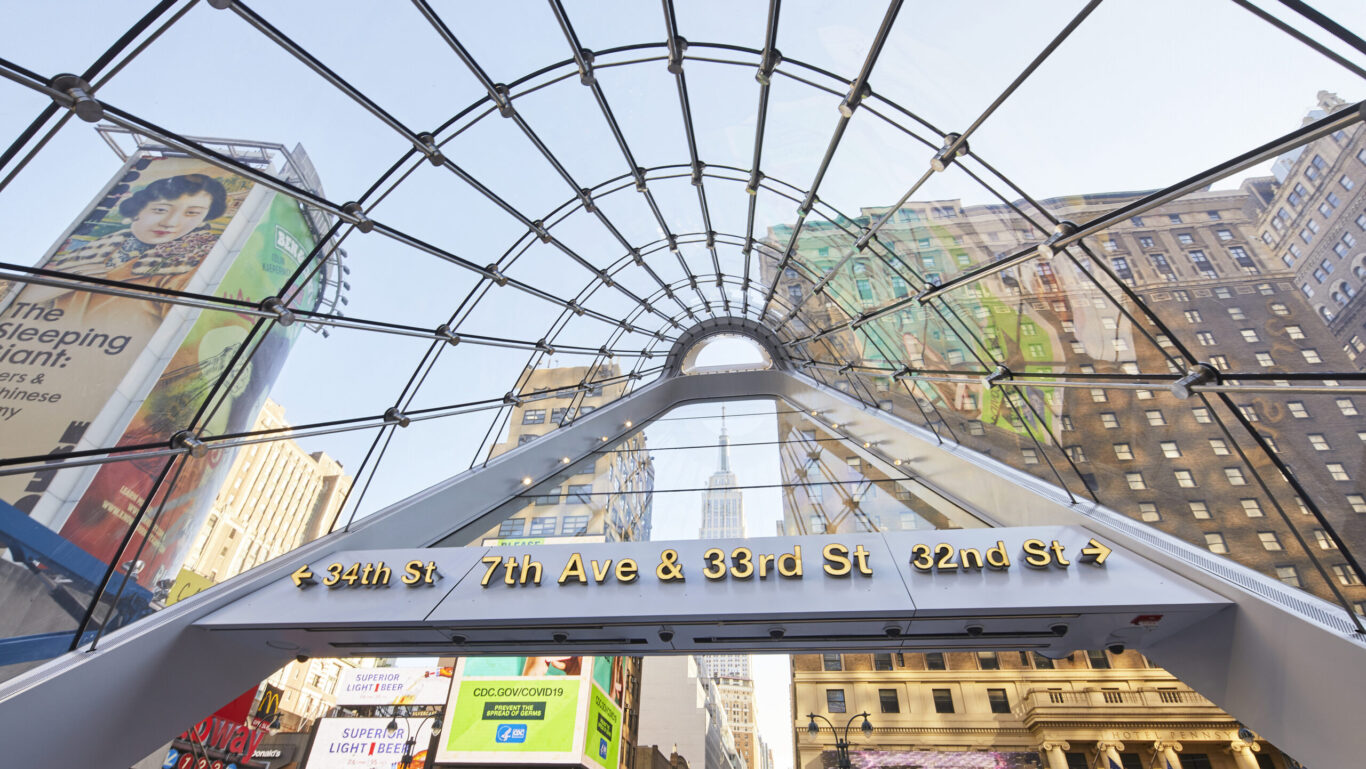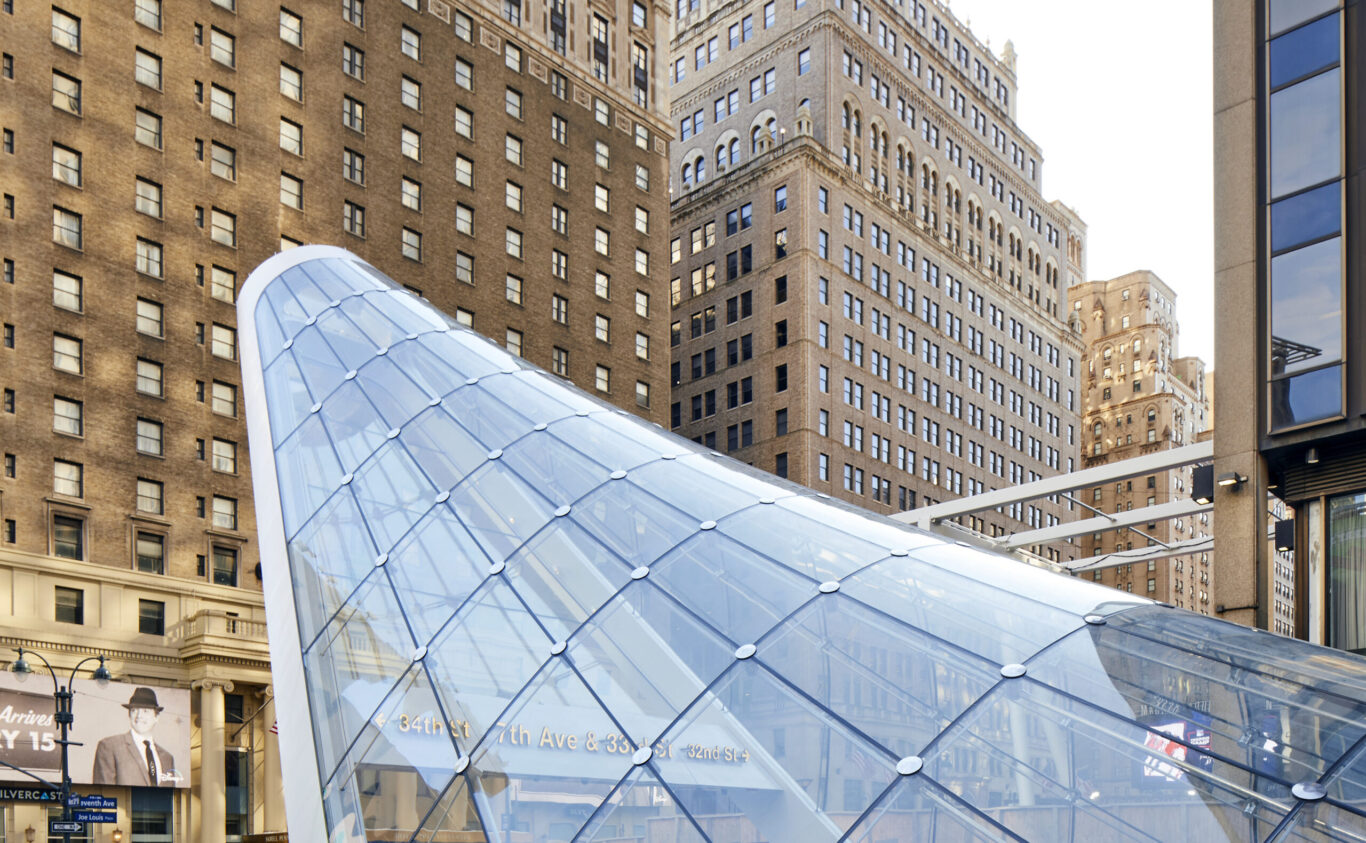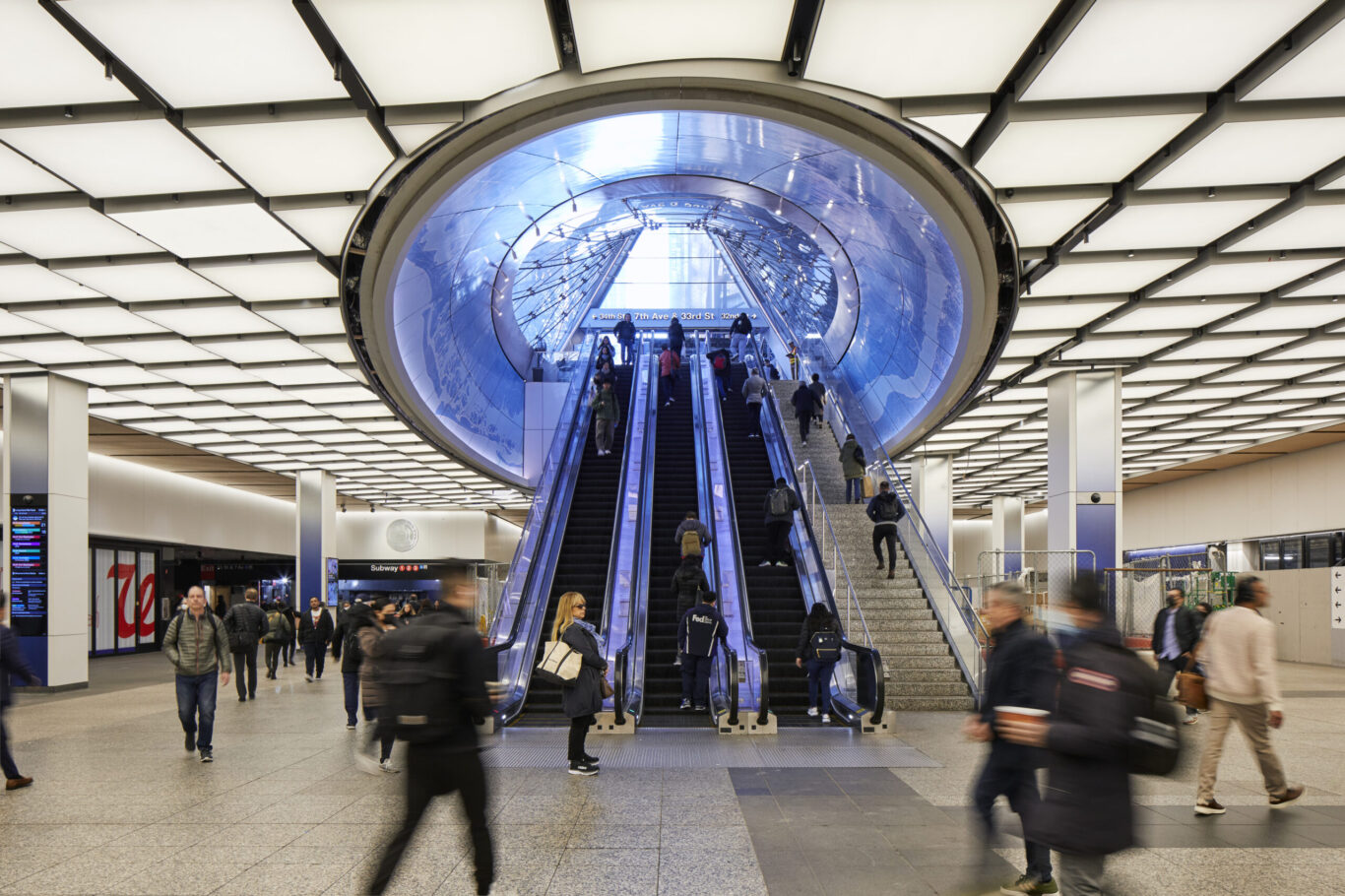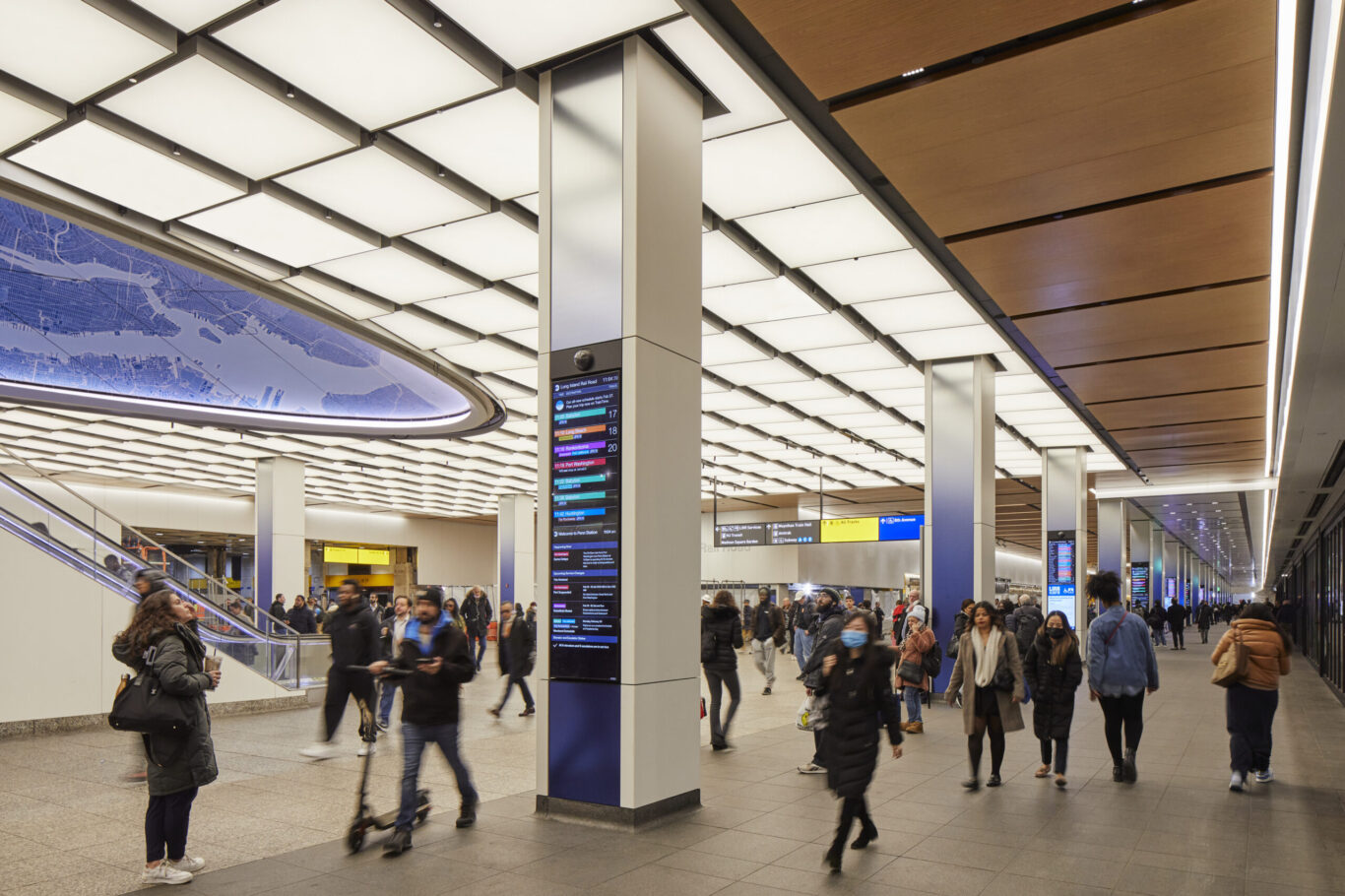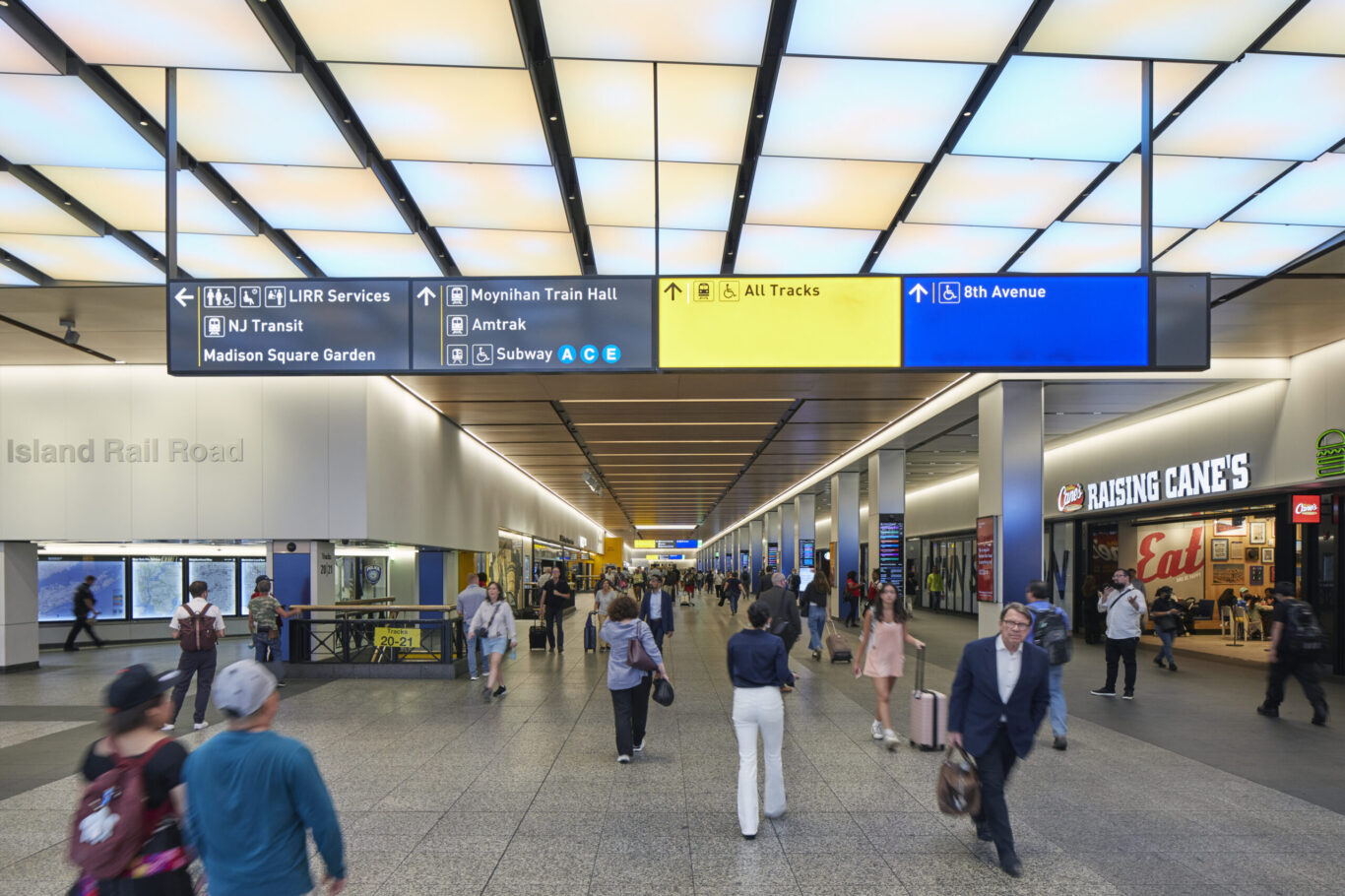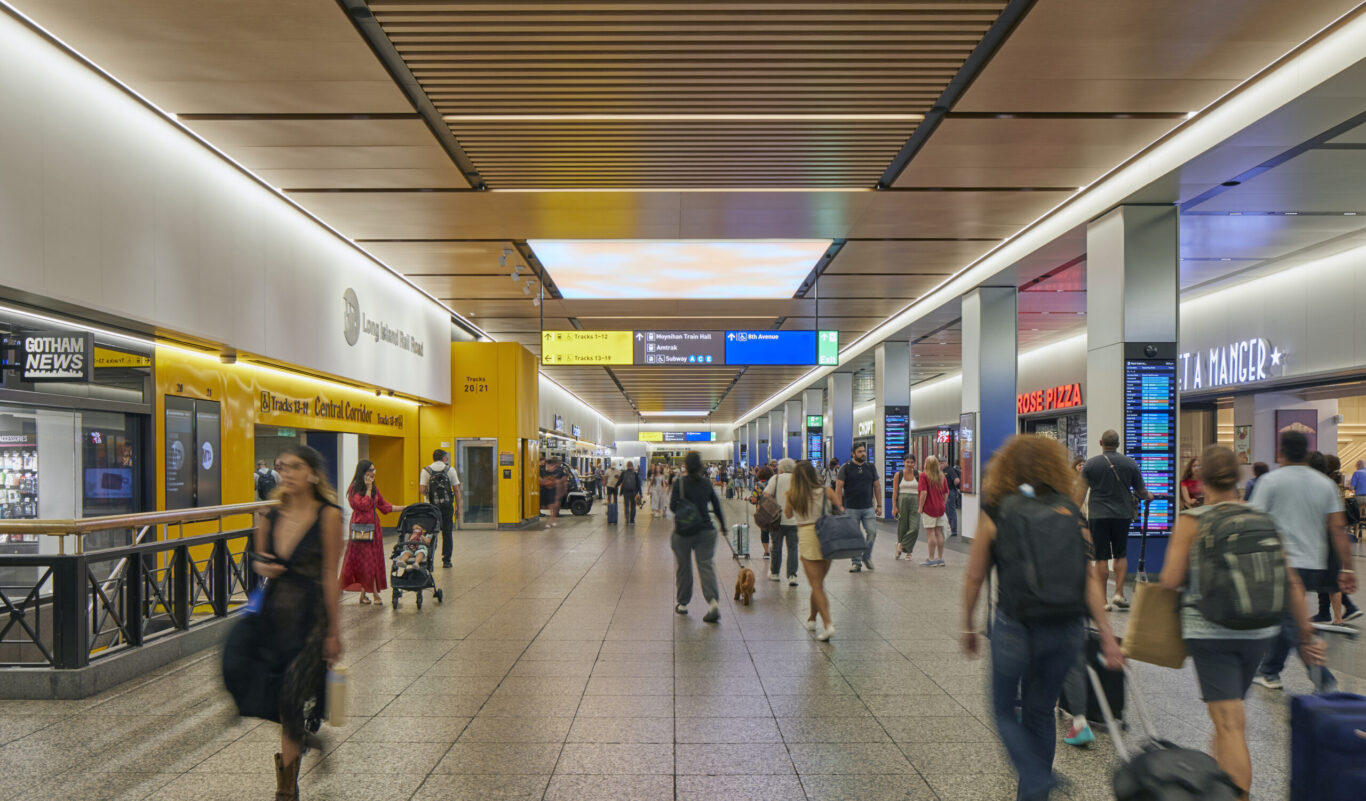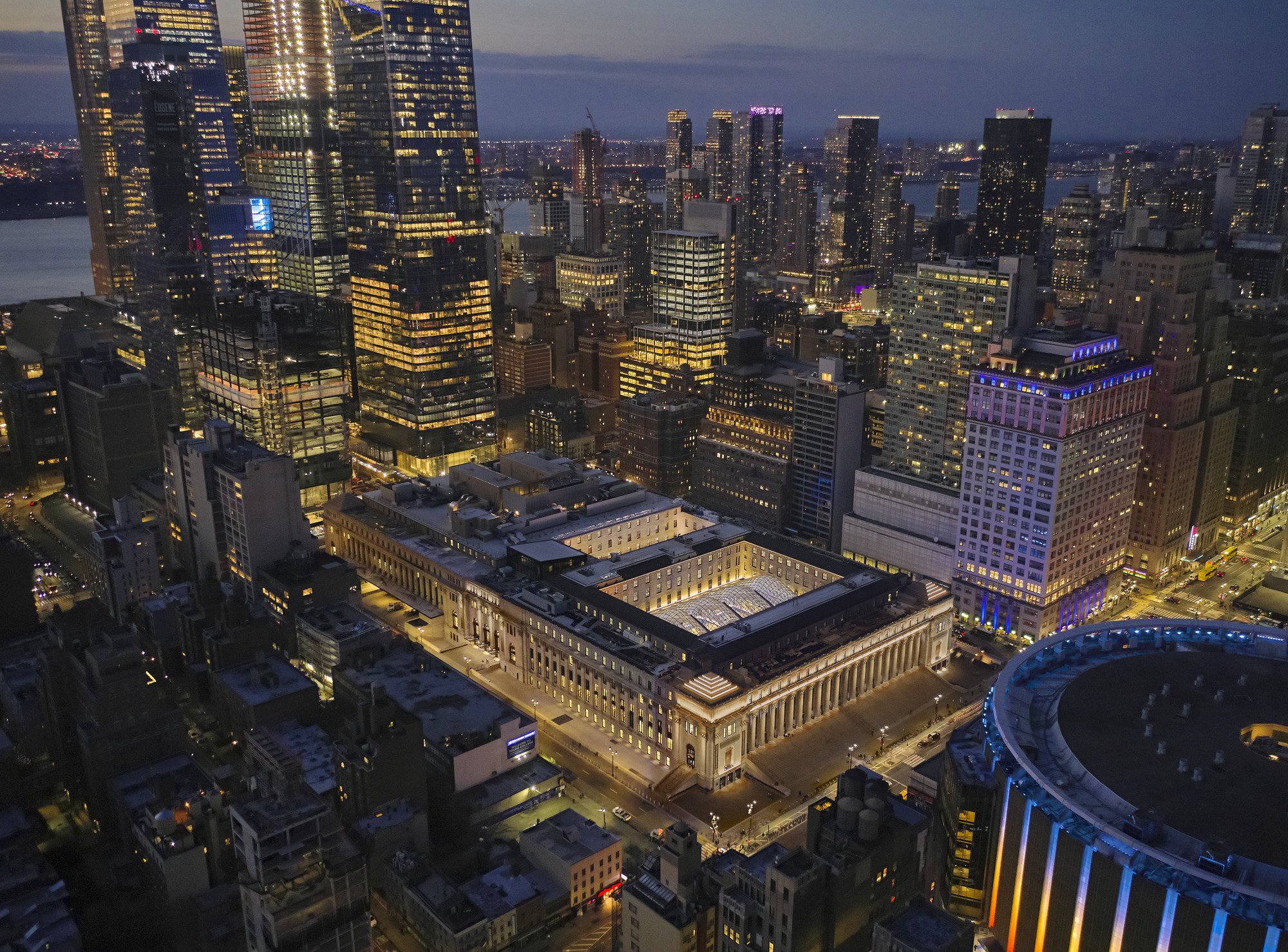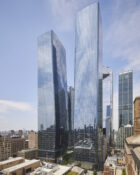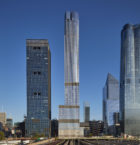Redesigning New York’s front door
SOM has played a central role in reimagining New York City’s Penn Station, the busiest train station in the Western Hemisphere and a hub for the Long Island Rail Road (LIRR), New Jersey Transit, Amtrak, and two subway lines. SOM’s work spans multiple blocks, from the adaptive reuse of the Farley Building into Moynihan Train Hall, down to the West End Concourse, through the renovated LIRR concourse, and out of the East End Gateway on Seventh Avenue. Together, the projects—which opened between 2017 and 2023—significantly relieve congestion and recapture the grandeur of rail travel to New York.







